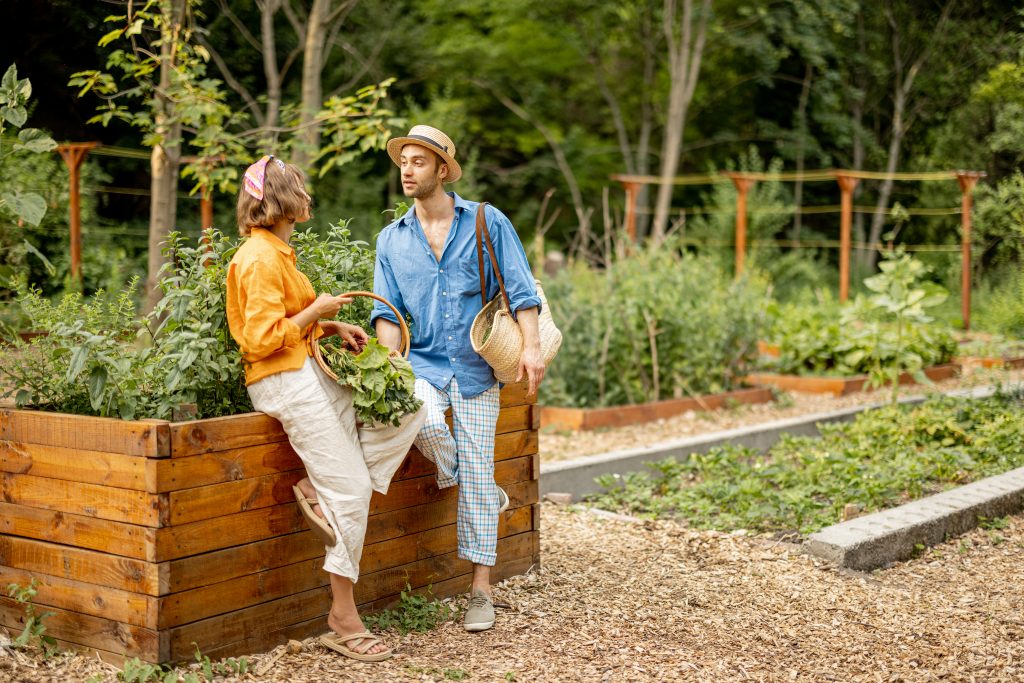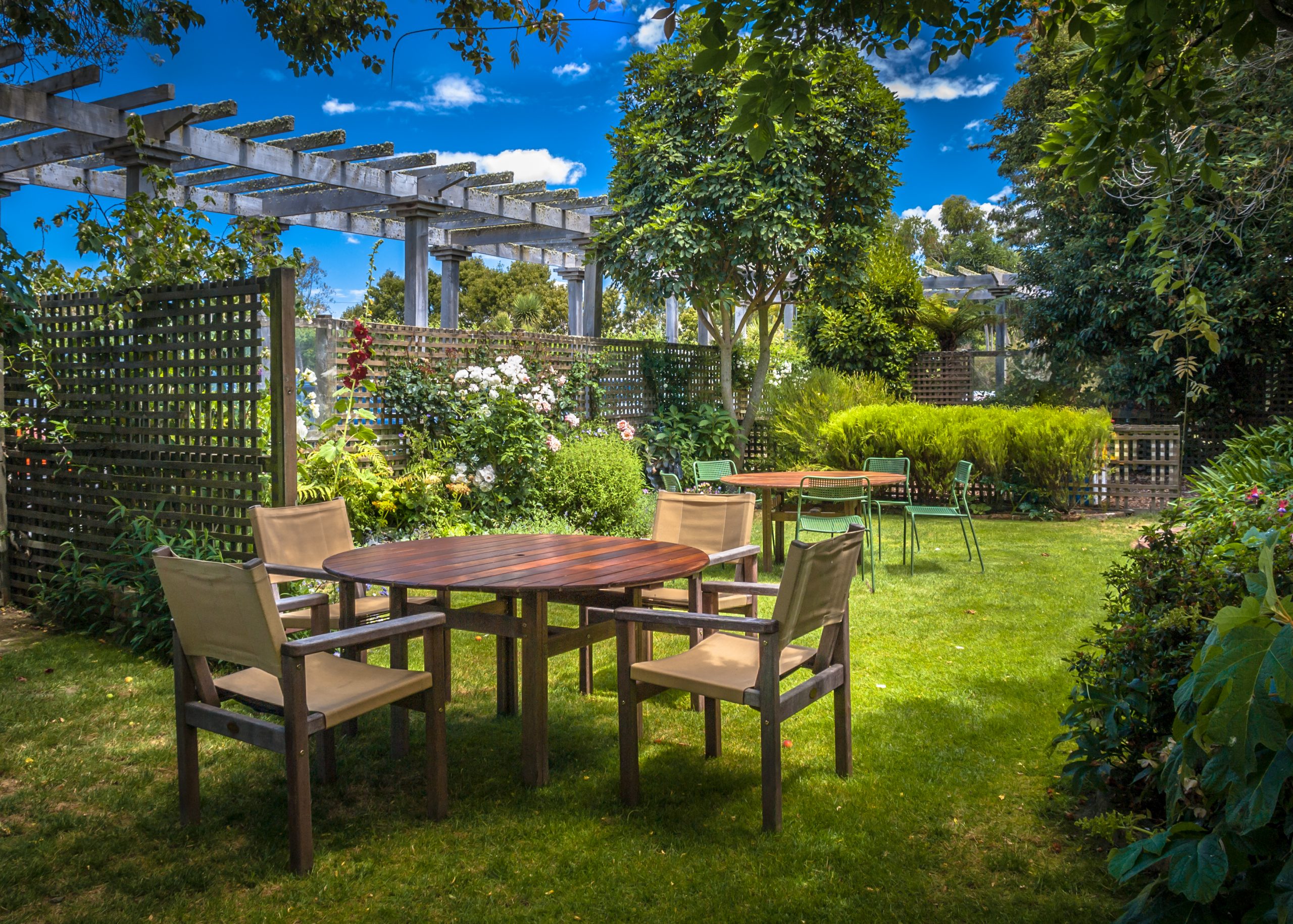Changing the look of your outdoor space is a great way to make it a comfortable and useful place to hang out and have fun. A well-planned yard can make your home look better and increase its worth. The right garden plan can help you get the most out of your outdoor space, no matter how big or small it is. You need to find design ideas if you want to make a place that fits your needs and shows off your style. This piece will talk about five yard design ideas that will help you make your outside place a beautiful haven. With these ideas, you can make the most of your outdoor space, whether you want to redo your whole yard or just add some new furniture. Get ready to rethink your yard and turn it into a stylish, useful, and great place to enjoy life outside.
Design Inspiration
Finding design ideas is the first thing you should do when you want to change your outdoor space. This will help you make a yard that is both beautiful and useful. Browse through magazines, books, and the Internet to find inspiration that fits your style and the look you want to achieve. Try out different ideas and designs to make an outdoor space that is truly yours and shows off your style. Finding design ideas is important for designing a garden, whether you want a modern, simple look or a cosy country garden.
Japanese Garden
Japanese parks are known for having a calm and peaceful atmosphere that makes people want to relax and unwind. Clean lines are an important part of Japanese garden design because they help make the whole look orderly and balanced. Choose simple furniture and pots with basic shapes to help you reach this goal.
Using trees that stay green all year is another important part of Japanese gardening. Even in the winter, these trees give the place a sense of stability and a constant presence. To make your outdoor place more interesting and unique, choose trees like pine or Japanese maple.
A big part of Japanese garden planning is also the lighting that is already there. With soft, warm lighting, you can enjoy your yard even in the evenings because it makes you feel welcome. You could use lanterns or outdoor string lights to light up important parts and make the atmosphere feel magical.
When it comes to specific design features, a Japanese garden must have a garden path. Make a way through the area with stepping stones or dirt to encourage people to take their time and enjoy the experience.
Finally, think about the type of paving you choose. Choose silver flooring or native stone to give the pattern a sense of sincerity and class.
Using these design elements in your outdoor space will help you make a calm and peaceful Japanese garden that you can escape from the busyness of everyday life.
Cottage Garden
A Cottage Garden is a cute and picture-perfect way to create a garden that gives off a comfy, casual vibe. There are lots of bright flowers, lots of greens, and cute structures like trellises and archways in this type of garden.
Use of traditional cottage garden plants is one of the most important parts of a cottage garden. Roses, lavender, delphiniums, and other blooming plants that add bright colours and sweet smells are some examples. A playful and romantic mood is created by arranging these plants in a loose and unstructured way.
In a Cottage Garden, paths are also very important. These paths, which wind through the yard and lead to different parts of the space, are generally made of dirt or stepping stones. With each step, a beautiful variety of flowers and leaves greets you, making you feel like you’re discovering something new and magical.
In order to make a Cottage Garden feel more cosy and lovely, sitting places are often added. There may be simple seats, cosy nooks, or cute eating sets in the yard so that people can relax and enjoy the beauty of the area.
Important parts of a Cottage Garden are also the decorative parts, like trellises, archways, and cute garden buildings. These structures add height and interest to the garden by supporting growing plants like clematis and roses. To top it all off, they add to the garden’s beauty and personality.
Container Gardens
People who don’t have much outdoor room or who just want to add a bit of green to their area should get a container plant. You can easily turn your outdoor space into a colourful oasis with these plants because they are very flexible.
One great thing about container gardening is that they can be changed to fit different needs. When you grow plants in pots, you can move them around, try out different layouts, and even bring them inside when it gets cold. This is great for people who live in apartments, yard in cities, or have a small patio or deck.
There are a lot of different plants that can be used in pot gardening. A lot of herbs, like basil, mint, and rosemary, do well in pots and are great for making food taste better. For those who have more room, you can even grow your own peppers, tomatoes, and greens.
Flowering plants like petunias, geraniums, and pansies can add a splash of colour and beauty to your garden. Not only do these plants look nice, but they can also bring bees to your yard. Make sure each plant has the right-sized pot and that the pots can drain well in case you forget.
It doesn’t matter how small your outdoor space is; container plants are a great way to make it look different. You can make a beautiful yard even if you don’t have a lot of room if you have a lot of different plants and can move them around easily.
Narrow Garden
If your yard is small and narrow, you might feel like you don’t have many style and plant choices. You can, however, turn your small area into a beautiful and useful outdoor oasis with some imagination and careful planning.
Using vertical plants is the best way to make the most of a small yard. By growing plants up, you can get more greenery without giving up any useful floor room. To make a vertical garden, you could put up trellises or pots that are attached to the wall. To give your space more height and texture, choose plants that grow in groups, like ivy or growing roses.
When planning a small yard, the plants you choose are another important thing to think about. Evergreen plants are great because they add colour and interest all year. They also help make a room look bigger by giving it more depth and dimension.
Adding raised beds to your small yard will make it look even better. Raised beds are not only nice to look at, but they also help water drain better and make growing easy. These beds can be used to grow many kinds of plants, from veggies to flowers.
Lastly, you might want to use plants or bushes to make a green border. This will give you more privacy and help frame your small room, making it feel cosier and friendlier.
You can turn your small, narrow yard into a beautiful outdoor escape with these design tips and tricks.

Conclusion
Finally, if you want to change the look of your outdoor space, you need to think carefully about how it will work, especially if you are working with a small area. Furniture that can be used for more than one thing or plants that can be used in different ways can help you make the most of the room you have. It’s also important to choose what to grow in your garden based on your own wants and needs, whether you want a colourful flowerbed or a useful veggie patch. Finally, don’t forget to use your indoor design style as a guide and incorporate parts of it into your outdoor area to make it feel cohesive and well-balanced. By thinking about these things and using design ideas that fit your vision, you can make an outdoor space that looks great and works well that everyone will enjoy.



